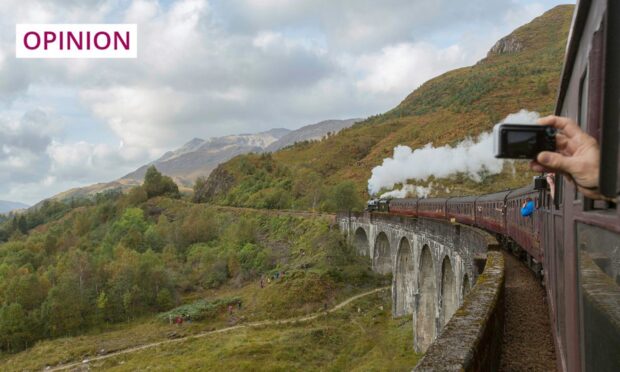There is no question that safety is paramount on Scotland’s railways, and any measures identified to avoid accidents and protect passengers must be taken as swiftly as possible.
Nonetheless, it is understandable that dismay is the overriding reaction to the ruling that heritage trains must have a central locking system.
The high profile Hogwarts Express and Flying Scotsman are just two trains that will ultimately be severely affected by the Office of Rail and Road (ORR) decision to withdraw longstanding exemptions that allowed older carriages with traditional “slam door” locks to be used.
 These two famous steam services alone attract visitors from across the world, bringing in many millions of pounds per year for the Scottish economy.
These two famous steam services alone attract visitors from across the world, bringing in many millions of pounds per year for the Scottish economy.
And, undoubtedly, countless tourists who arrive in this country with the sole intention of travelling on one of these routes fall in love with the stunning landscapes and warm hospitality the north of Scotland offers.
The result has been a serious boost for hotels, restaurants, bars, shops and more. While the Hogwarts Express has this week been issued a three-month exemption, meaning journey bookings are now open until February 2024, the possibility remains that both it and the Flying Scotsman could soon be out of action, directly impacting footfall for all of the businesses normally providing extra services for train passengers.
Desire to protect heritage and authenticity
Profit is by no means the only concern, however. Scotland has a strong and proud connection to the railway, and steam locomotives in particular. According to experts, updating the doors in question with a central locking system would not only cost upwards of £7 million, but also irreversibly alter 100-year-old vehicles.
Enthusiasts feel heritage trains should not be relegated to specialist railways and should run on main lines, as they did for many years and, indeed, were designed to do. Clearly the appetite for authentic steam train travel is enormous, and there could feasibly be an impact on that popularity if original carriages are retired and more modern versions are put into operation.
Some argue that “slam door” trains and current practices around using them are safe. There have also been conversations around possible alternatives to the proposed new central locking systems that might increase safety to a satisfactory level. All of this has to be thoroughly investigated by the ORR and, where possible, compromise must be reached.
Ultimately, nobody should ever be put at risk of injury or death as a result of travelling on any form of public transport in Scotland today, but that does not rule out further discussion of this matter, possibly resulting in problem-solving innovation.
The Voice of the North is The Press & Journal’s editorial stance on what we think are the most important issues of the week



Conversation